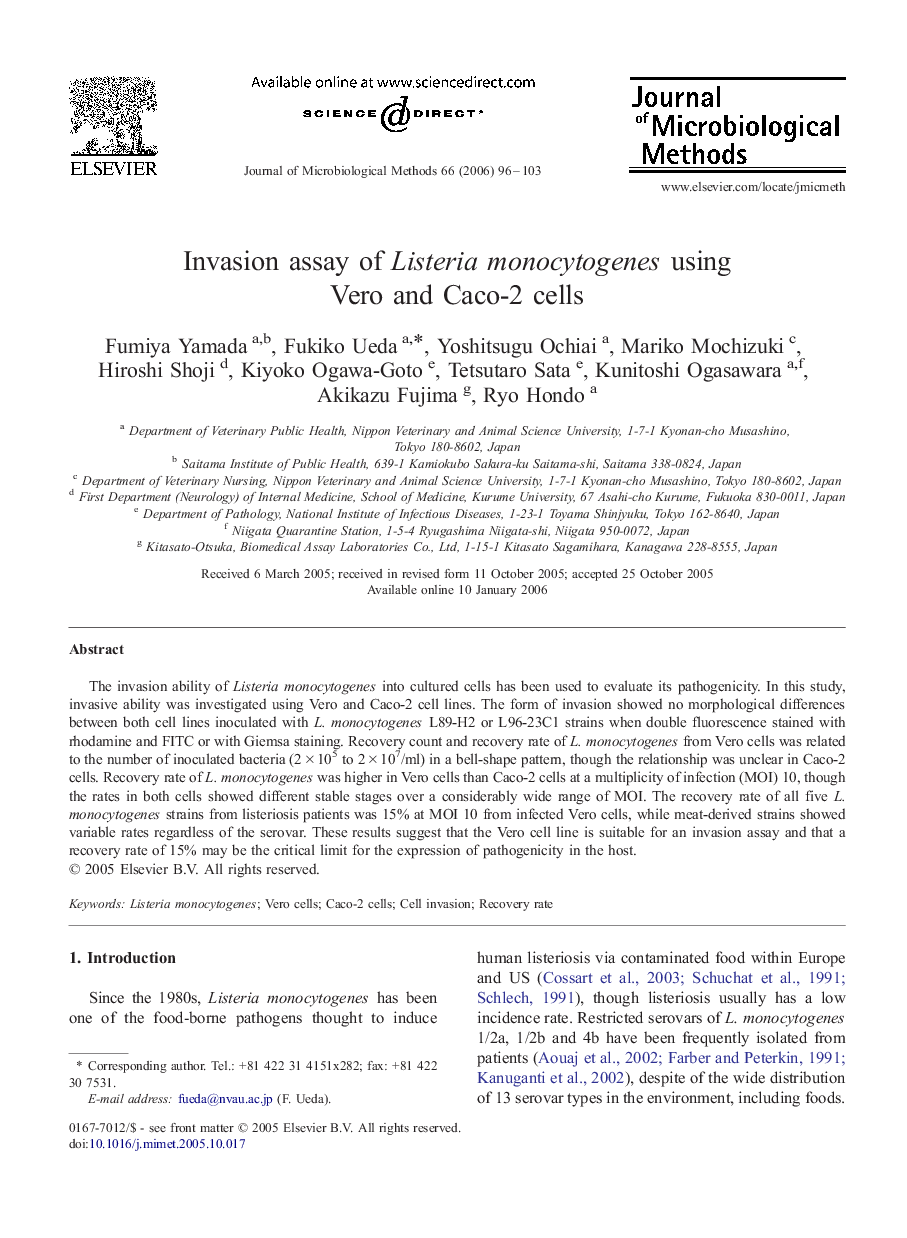| Article ID | Journal | Published Year | Pages | File Type |
|---|---|---|---|---|
| 2092081 | Journal of Microbiological Methods | 2006 | 8 Pages |
The invasion ability of Listeria monocytogenes into cultured cells has been used to evaluate its pathogenicity. In this study, invasive ability was investigated using Vero and Caco-2 cell lines. The form of invasion showed no morphological differences between both cell lines inoculated with L. monocytogenes L89-H2 or L96-23C1 strains when double fluorescence stained with rhodamine and FITC or with Giemsa staining. Recovery count and recovery rate of L. monocytogenes from Vero cells was related to the number of inoculated bacteria (2 × 105 to 2 × 107/ml) in a bell-shape pattern, though the relationship was unclear in Caco-2 cells. Recovery rate of L. monocytogenes was higher in Vero cells than Caco-2 cells at a multiplicity of infection (MOI) 10, though the rates in both cells showed different stable stages over a considerably wide range of MOI. The recovery rate of all five L. monocytogenes strains from listeriosis patients was 15% at MOI 10 from infected Vero cells, while meat-derived strains showed variable rates regardless of the serovar. These results suggest that the Vero cell line is suitable for an invasion assay and that a recovery rate of 15% may be the critical limit for the expression of pathogenicity in the host.
